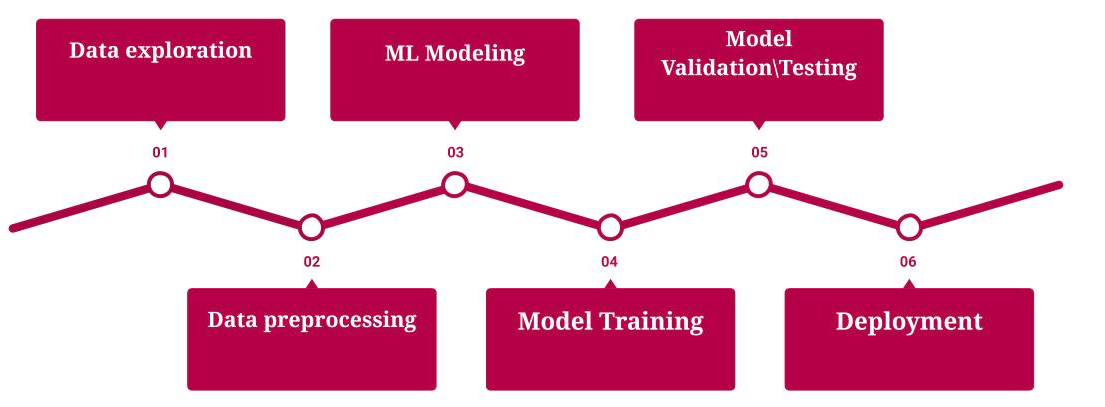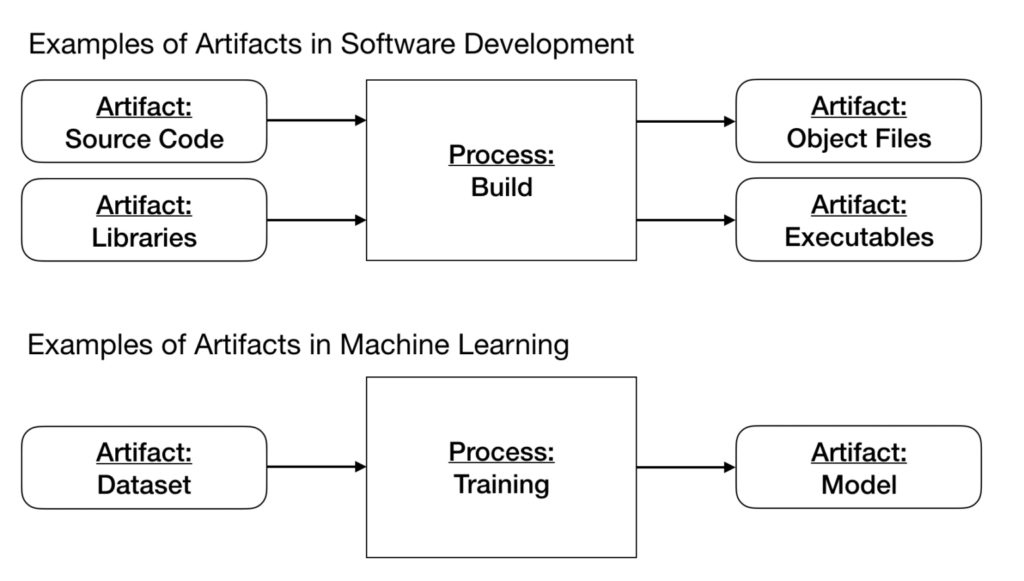All Categories
Featured
Table of Contents
- – Some Of How To Become A Machine Learning Engin...
- – The Best Strategy To Use For Software Engineer...
- – How Online Machine Learning Engineering & Ai ...
- – Unknown Facts About Ai And Machine Learning C...
- – Not known Details About How To Become A Mach...
- – The 9-Second Trick For Machine Learning For ...
- – The smart Trick of How To Become A Machine L...
Some individuals believe that that's disloyalty. Well, that's my whole job. If somebody else did it, I'm going to utilize what that person did. The lesson is placing that aside. I'm requiring myself to assume via the possible options. It's more regarding eating the material and trying to use those ideas and much less about discovering a library that does the job or searching for somebody else that coded it.
Dig a little bit deeper in the math at the beginning, simply so I can develop that foundation. Santiago: Lastly, lesson number 7. This is a quote. It says "You have to understand every information of a formula if you intend to use it." And afterwards I state, "I assume this is bullshit recommendations." I do not believe that you need to recognize the nuts and bolts of every formula prior to you utilize it.
I would certainly have to go and check back to in fact get a far better intuition. That doesn't mean that I can not solve points using neural networks? It goes back to our sorting example I assume that's simply bullshit advice.
As a designer, I have actually dealt with many, several systems and I have actually utilized several, numerous points that I do not understand the nuts and screws of exactly how it works, although I recognize the effect that they have. That's the final lesson on that particular thread. Alexey: The amusing thing is when I consider all these libraries like Scikit-Learn the formulas they utilize inside to carry out, for instance, logistic regression or another thing, are not the exact same as the algorithms we study in artificial intelligence classes.
Some Of How To Become A Machine Learning Engineer & Get Hired ...
Even if we attempted to find out to get all these fundamentals of equipment learning, at the end, the formulas that these collections make use of are different. ? (30:22) Santiago: Yeah, absolutely. I assume we need a lot extra pragmatism in the industry. Make a whole lot more of an impact. Or concentrating on providing value and a little bit much less of purism.

I typically talk to those that desire to work in the sector that desire to have their influence there. I do not risk to speak concerning that because I don't know.
Right there outside, in the industry, materialism goes a lengthy method for sure. Santiago: There you go, yeah. Alexey: It is a great motivational speech.
The Best Strategy To Use For Software Engineering For Ai-enabled Systems (Se4ai)
One of the things I wanted to ask you. First, allow's cover a couple of points. Alexey: Allow's start with core devices and structures that you need to discover to in fact change.
I know Java. I understand SQL. I understand exactly how to make use of Git. I understand Celebration. Perhaps I know Docker. All these things. And I find out about artificial intelligence, it looks like a great point. So, what are the core tools and frameworks? Yes, I viewed this video and I obtain convinced that I do not require to get deep right into math.
What are the core devices and frameworks that I need to find out to do this? (33:10) Santiago: Yeah, definitely. Terrific concern. I believe, top, you should start learning a little of Python. Given that you currently recognize Java, I do not think it's going to be a huge transition for you.
Not because Python is the exact same as Java, but in a week, you're gon na get a lot of the differences there. Santiago: After that you obtain certain core devices that are going to be utilized throughout your entire profession.
How Online Machine Learning Engineering & Ai Bootcamp can Save You Time, Stress, and Money.
You obtain SciKit Learn for the collection of machine learning formulas. Those are tools that you're going to have to be utilizing. I do not recommend simply going and learning regarding them out of the blue.
Take one of those training courses that are going to begin presenting you to some troubles and to some core concepts of device understanding. I don't remember the name, yet if you go to Kaggle, they have tutorials there for totally free.
What's excellent regarding it is that the only demand for you is to understand Python. They're going to provide a trouble and inform you just how to make use of choice trees to solve that certain problem. I think that procedure is exceptionally powerful, because you go from no maker learning history, to recognizing what the issue is and why you can not solve it with what you understand today, which is straight software design methods.
Unknown Facts About Ai And Machine Learning Courses
On the other hand, ML designers concentrate on structure and deploying equipment discovering versions. They concentrate on training models with information to make predictions or automate tasks. While there is overlap, AI engineers take care of even more diverse AI applications, while ML engineers have a narrower emphasis on device discovering formulas and their sensible application.

Machine understanding engineers concentrate on creating and deploying equipment discovering designs right into production systems. On the various other hand, data scientists have a broader role that includes information collection, cleansing, exploration, and building models.
As companies increasingly take on AI and machine knowing modern technologies, the demand for knowledgeable experts grows. Machine understanding engineers work with sophisticated jobs, add to technology, and have competitive salaries. Nevertheless, success in this area needs continuous understanding and staying up to date with progressing technologies and techniques. Artificial intelligence functions are typically well-paid, with the possibility for high gaining possibility.
ML is basically different from typical software program advancement as it focuses on mentor computer systems to learn from data, as opposed to shows explicit rules that are implemented systematically. Unpredictability of outcomes: You are most likely utilized to composing code with predictable outcomes, whether your feature runs when or a thousand times. In ML, nonetheless, the results are much less particular.

Pre-training and fine-tuning: How these versions are trained on huge datasets and after that fine-tuned for particular jobs. Applications of LLMs: Such as message generation, view evaluation and details search and access.
Not known Details About How To Become A Machine Learning Engineer - Exponent
The capacity to handle codebases, merge changes, and solve conflicts is just as vital in ML growth as it is in standard software jobs. The abilities created in debugging and screening software applications are extremely transferable. While the context may alter from debugging application logic to recognizing problems in data processing or version training the underlying principles of organized examination, theory testing, and iterative improvement are the exact same.
Equipment discovering, at its core, is greatly reliant on data and likelihood theory. These are critical for recognizing just how algorithms learn from data, make forecasts, and evaluate their efficiency.
For those thinking about LLMs, an extensive understanding of deep discovering architectures is beneficial. This includes not just the auto mechanics of semantic networks yet also the style of particular designs for different use cases, like CNNs (Convolutional Neural Networks) for picture processing and RNNs (Frequent Neural Networks) and transformers for consecutive data and all-natural language processing.
You need to understand these concerns and learn methods for recognizing, mitigating, and communicating concerning predisposition in ML designs. This includes the possible influence of automated choices and the moral ramifications. Lots of versions, particularly LLMs, call for considerable computational sources that are often provided by cloud platforms like AWS, Google Cloud, and Azure.
Structure these skills will certainly not only facilitate a successful change into ML but likewise make certain that designers can add properly and sensibly to the innovation of this dynamic area. Theory is important, however nothing beats hands-on experience. Begin working with tasks that allow you to apply what you've discovered in a sensible context.
Construct your projects: Begin with easy applications, such as a chatbot or a text summarization tool, and gradually increase complexity. The field of ML and LLMs is swiftly advancing, with new breakthroughs and innovations emerging routinely.
The 9-Second Trick For Machine Learning For Developers
Sign up with neighborhoods and discussion forums, such as Reddit's r/MachineLearning or area Slack networks, to go over concepts and get recommendations. Go to workshops, meetups, and seminars to get in touch with various other professionals in the field. Add to open-source projects or create article about your learning trip and jobs. As you obtain knowledge, start looking for opportunities to include ML and LLMs into your job, or look for new roles concentrated on these innovations.

Potential use situations in interactive software application, such as recommendation systems and automated decision-making. Recognizing unpredictability, standard statistical procedures, and likelihood circulations. Vectors, matrices, and their role in ML formulas. Error minimization methods and gradient descent described simply. Terms like version, dataset, attributes, tags, training, reasoning, and recognition. Data collection, preprocessing strategies, model training, evaluation procedures, and deployment factors to consider.
Choice Trees and Random Woodlands: User-friendly and interpretable versions. Support Vector Machines: Optimum margin classification. Matching issue kinds with appropriate models. Stabilizing performance and intricacy. Standard framework of neural networks: neurons, layers, activation features. Layered calculation and ahead propagation. Feedforward Networks, Convolutional Neural Networks (CNNs), Recurrent Neural Networks (RNNs). Photo recognition, sequence forecast, and time-series analysis.
Information flow, improvement, and feature design techniques. Scalability concepts and performance optimization. API-driven techniques and microservices integration. Latency monitoring, scalability, and version control. Constant Integration/Continuous Release (CI/CD) for ML process. Version surveillance, versioning, and efficiency monitoring. Detecting and dealing with changes in version performance in time. Addressing performance traffic jams and source management.
The smart Trick of How To Become A Machine Learning Engineer - Uc Riverside That Nobody is Talking About

Training course OverviewMachine knowing is the future for the future generation of software professionals. This course functions as a guide to artificial intelligence for software program engineers. You'll be presented to 3 of one of the most appropriate parts of the AI/ML discipline; managed knowing, neural networks, and deep learning. You'll comprehend the differences in between conventional shows and artificial intelligence by hands-on development in monitored understanding prior to building out complex dispersed applications with semantic networks.
This program serves as a guide to device lear ... Program A lot more.
Table of Contents
- – Some Of How To Become A Machine Learning Engin...
- – The Best Strategy To Use For Software Engineer...
- – How Online Machine Learning Engineering & Ai ...
- – Unknown Facts About Ai And Machine Learning C...
- – Not known Details About How To Become A Mach...
- – The 9-Second Trick For Machine Learning For ...
- – The smart Trick of How To Become A Machine L...
Latest Posts
How To Fast-track Your Faang Interview Preparation
The Star Method – How To Answer Behavioral Interview Questions
The Science Of Interviewing Developers – A Data-driven Approach
More
Latest Posts
How To Fast-track Your Faang Interview Preparation
The Star Method – How To Answer Behavioral Interview Questions
The Science Of Interviewing Developers – A Data-driven Approach